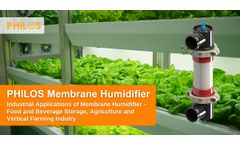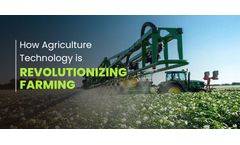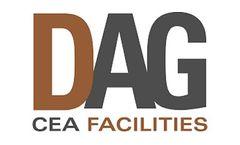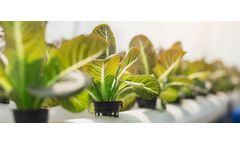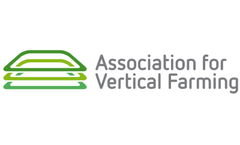Refine by
Controlled Environment Agriculture Articles & Analysis
17 articles found
In today’s highly regulated industries like food and beverage storage and agriculture, maintaining optimal humidity control is critical to ensuring product quality, extending shelf life, and maximizing operational efficiency. The Industrial Applications of Membrane Humidifier – Food and Beverage Storage, Agriculture and Vertical Farming Industry rely heavily on precise humidification ...
The agricultural sector is at a critical stage. With the global population projected to reach nearly 10 billion by 2050, the demand for food is increasing rampantly. At the same time, there is mounting pressure to adopt sustainable farming practices to protect our planet’s limited resources. This delicate balance between increasing food production and minimizing environmental impact ...
Modern technology is also creating more efficient management systems, generating more profitable agricultural production. Modern Technology in Agriculture The precision farming and technological revolution in agriculture began in the late 20th century with advances in GPS-location tracking technology. ...
ByAGRIVI
North America’s leading Engineering, Procurement & Construction (EPC) firm for Controlled Environment Agriculture facilities – is pleased to announce the hiring of Jeffrey Lair as Director of Architecture & Engineering, effective July 12, 2021. ...
This article will explore just a few of these processes such as the use of gas sensors within vertical farming, the detecting the spoilage of grains, controlled environment horticulture, anaerobic digestion and biogas. Vertical Farming Technology Vertical farming is the practice of producing food in vertical layers using indoor farming techniques and ...
The future of agriculture is ever-changing… And in the bid to feed the world by 2050 there are a number of key challenges, but also exciting opportunities. With an ever-rising global population, climate change, food security and working out how to produce enough nutrient-dense food for the masses are high priorities for the agriculture sector. These colossal world issues present many ...
Commercial indoor farming is traditionally labour and energy-intensive, but it doesn’t need to be… To create and maintain a successful commercial indoor growing enterprise, it is essential to balance all the inputs and outputs related to your business. This can often be a delicate and all-consuming task. As your operation develops it can be difficult to see where savings can be ...
Food security, nutrition and the future of farming are challenges that face us all, but with innovation and research, there are solutions at hand. Commercial indoor growing is a fast-paced and ever-evolving industry. And rightly so, if we have any hope of feeding growing populations with high quality, nutrient-dense food then we need to be looking beyond conventional farming and start embracing ...
Crop registration - an essential piece of the puzzle No matter how well controlled a growing environment is, environmental conditions are bound to vary from time to time. This can be due to the weather conditions in your natural climate, interactions between different plant species or even changes in your operational practices. It’s essential to gain knowledge and understanding of all of ...
Although these operations only enabled the most basic functions to occur, they demonstrated how feasible it was to grow plants in vertical structures and thus, for the first time in history, opened doors to the vast number of opportunities associated with space-optimised and controlled-environment food production in urban environments. Notably, ...
As global warming continues, it is imperative that forms of Controlled Environment Agriculture (CEA) are further employed to protect against infestation and preclude future crises. ...
This article will explore just a few of these processes such as the use of gas sensors within vertical farming, the detecting the spoilage of grains, controlled environment horticulture, anaerobic digestion and biogas. Vertical Farming Technology Vertical farming is the practice of producing food in vertical layers using indoor farming techniques and ...
City-based agriculture produces 15 to 20 percent of food globally. In the U.S., its benefits go far beyond nutrition. This story was produced in collaboration with the Food & Environment Reporting Network, a non-profit investigative news organization. ...
ByEnsia
It can be used for any kind of cultivation such as agriculture, hydroponic, organic, indoor planting, home gardening, botanical and even soil treatment. ...
The use of treated pulp mill effluent on eucalyptus plantation appears to be an attractive option for plant nutrition and water supply. It also constitutes a supplementary treatment process and a final disposal option for the mill effluent. This study aimed at the investigation and evaluation of the effects of bleached kraft pulp mill treated effluent on three typical Brazilian soils used for ...
The use of treated pulp mill effluent on eucalyptus plantation appears to be an attractive option for plant nutrition and water supply. It also constitutes a supplementary treatment process and a final disposal option for the mill effluent. This study aimed at the investigation and evaluation of the effects of bleached kraft pulp mill treated effluent on three typical Brazilian soils used for ...
In the light of an analysis of the solar radiation and temperature resources in different part of China, this paper classifies Environment-Controlled Agriculture (ECA) in China into zones and briefly introduces the feature of each zone. ...

